Navigating the customer journey can be a complex process, with the pricing page often serving as the crucial point where potential clients make their final decision.
The importance of a well-designed pricing page cannot be underestimated, as it has the power to persuade prospects to take that final step and click the “buy” button.
Yet, many businesses struggle to create an effective SaaS pricing page that incorporates essential components and best practices.
An ideal SaaS pricing page strikes a balance between simplicity, clarity, value, and trust.
In this article, we will explore the key elements and strategies used by successful SaaS companies to optimize their pricing pages and drive conversions, ultimately, transforming prospects into loyal customers.
When designing an effective SaaS pricing page, it’s essential to consider both the overall strategy and the specific components that influence conversions.
Based on our analysis of various SaaS websites, we’ve identified five crucial elements that contribute to a high-converting pricing page.
A deep understanding of your target audience’s preferences and pain points, combined with best design practices, will contribute to a pricing page that truly communicates your product’s value and encourages prospective customers to subscribe.
Remember to consider factors such as responsiveness, scannability, and currency conversion, as these aspects play a crucial role in designing an efficient and user-friendly SaaS pricing page.
Offering the right number of pricing tiers is essential to prevent overwhelming potential customers.
Three tiers are considered optimal, as they provide a balanced choice without causing confusion or decision paralysis.
This way, each tier addresses a specific segment within the target audience, increasing the likelihood of successful conversions.
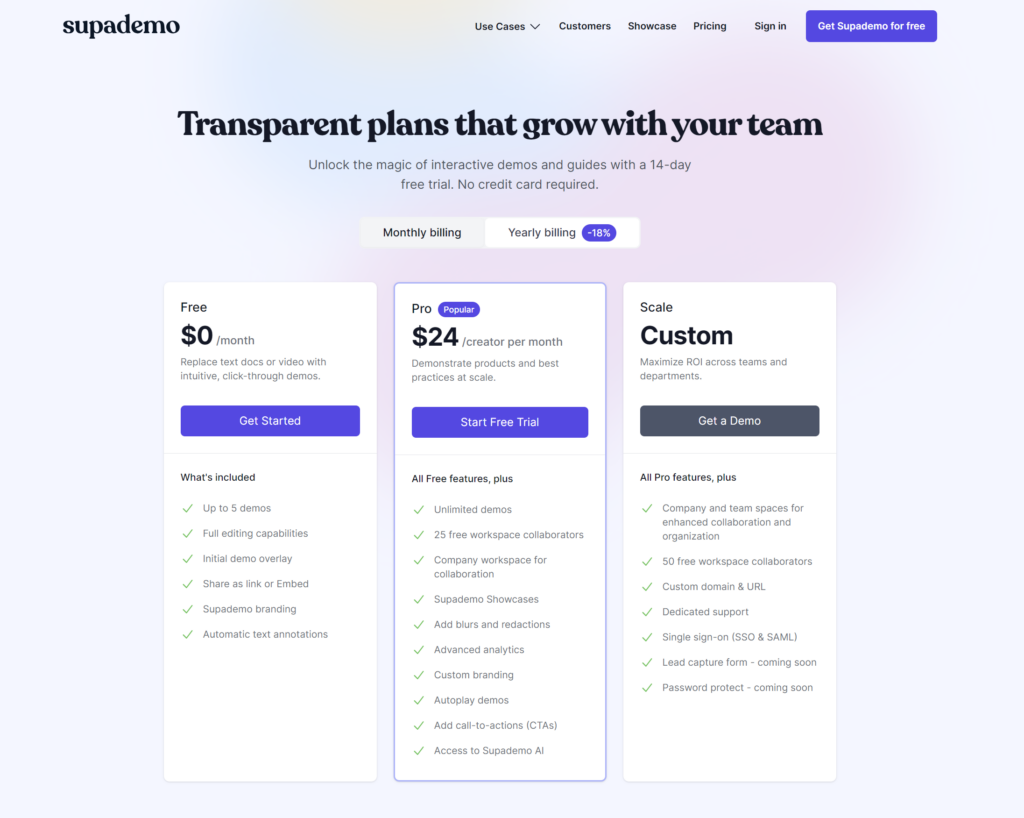
Supademo provides a clean, concise three-tier pricing plan using the exact framework outlined above.
A well-crafted pricing page should present the best-match product offers based on the defined buyer personas.
By naming the price plans according to customer segments or their needs, it becomes clear which product is tailored to solve each group’s problems.
To achieve this:
Loom does a great job of breaking out their three core plans, specifically stating which ones is best for who:
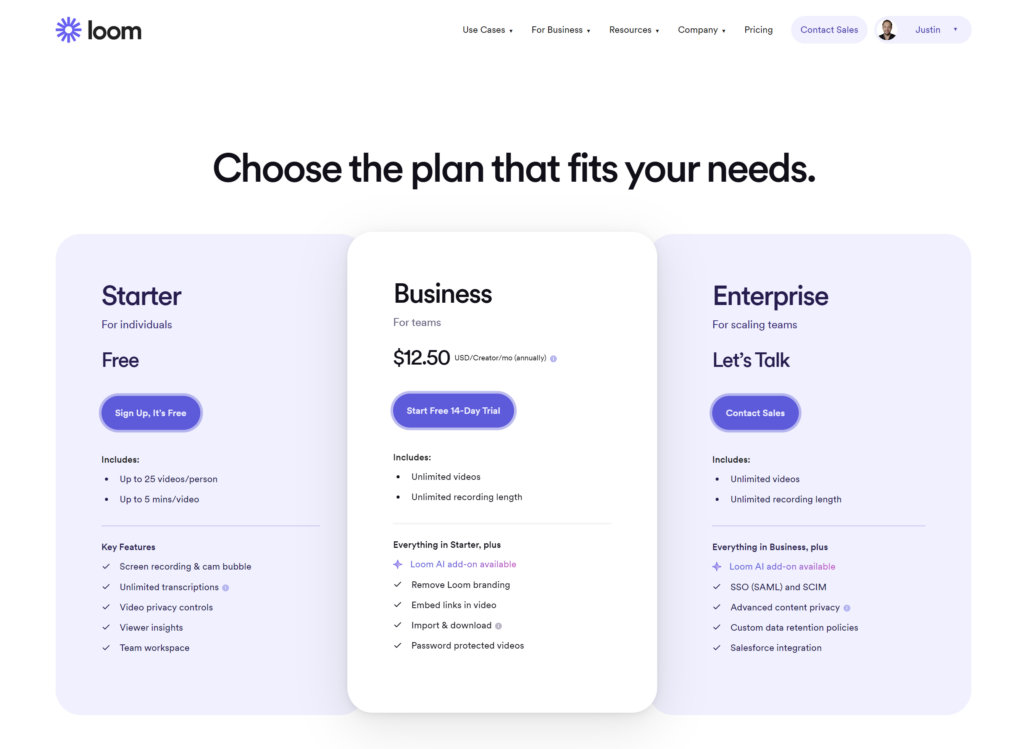
Research suggests that positioning the most expensive plan on the left side of the pricing page increases the chances of a visitor choosing it.
By starting with the highest-priced offer, the subsequent, lower-priced plans appear more attractive and advantageous.
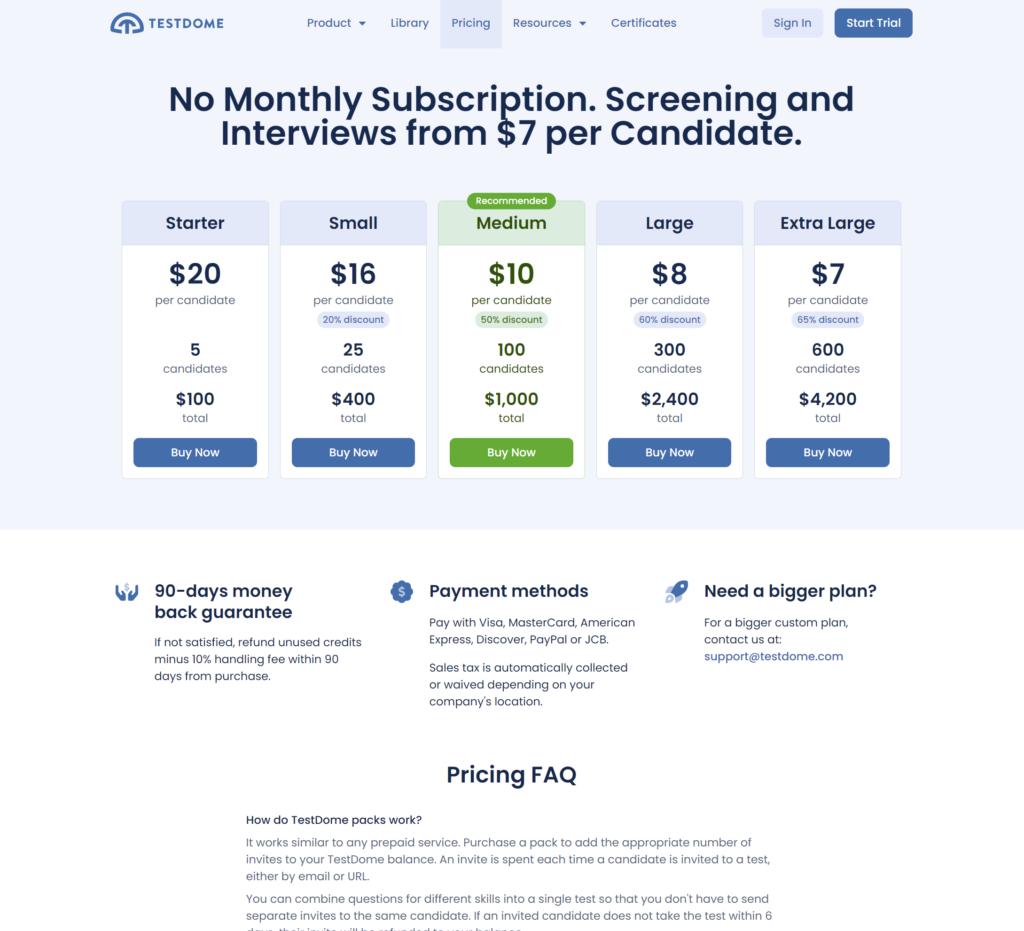
Testdome is an example of starting with the most expensive plan first, and then laying out the cheaper plans moving to the right.
A successful pricing page should clearly showcase the value proposition of each plan.
To do this, emphasize the most important features and benefits that cater to each buyer persona.
Addressing fears, uncertainties, and doubts is crucial for converting potential customers.
Some ways to achieve this include:
Toast does a great job on its pricing page of defining real sales-related questions and objections that help to eliminate uncertainties and answer those core questions right on the pricing page.
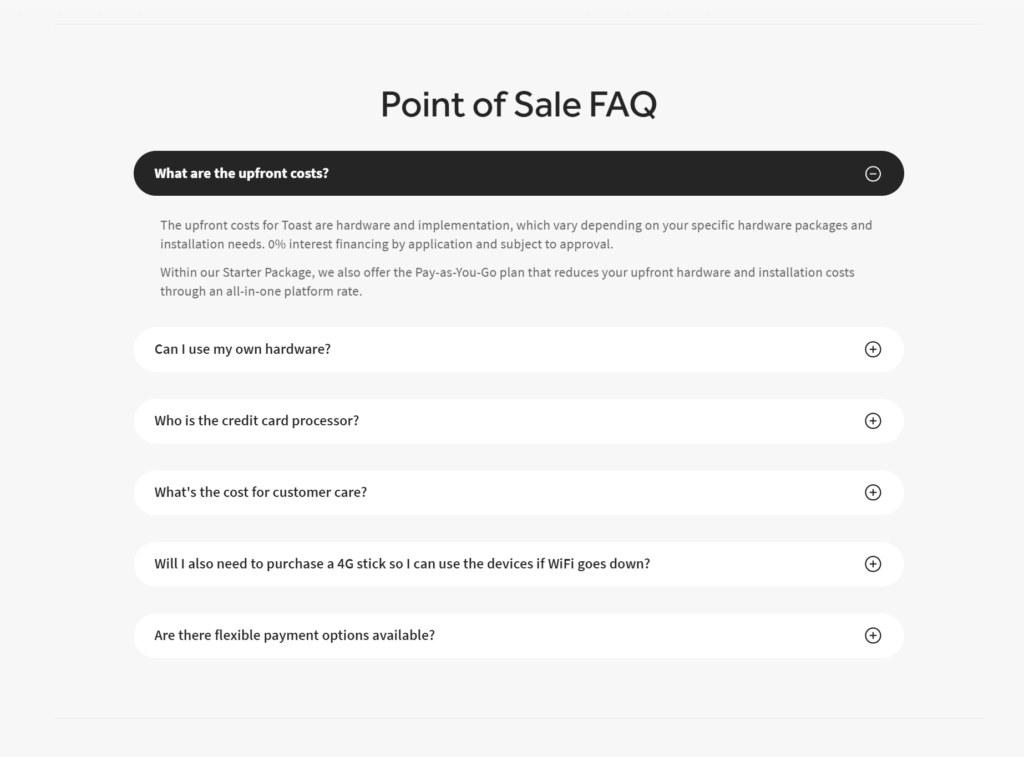
Additionally, right underneath of their FAQs, they provide real social proof with not one, but dozens of customer success stories of how real clients are using their product:
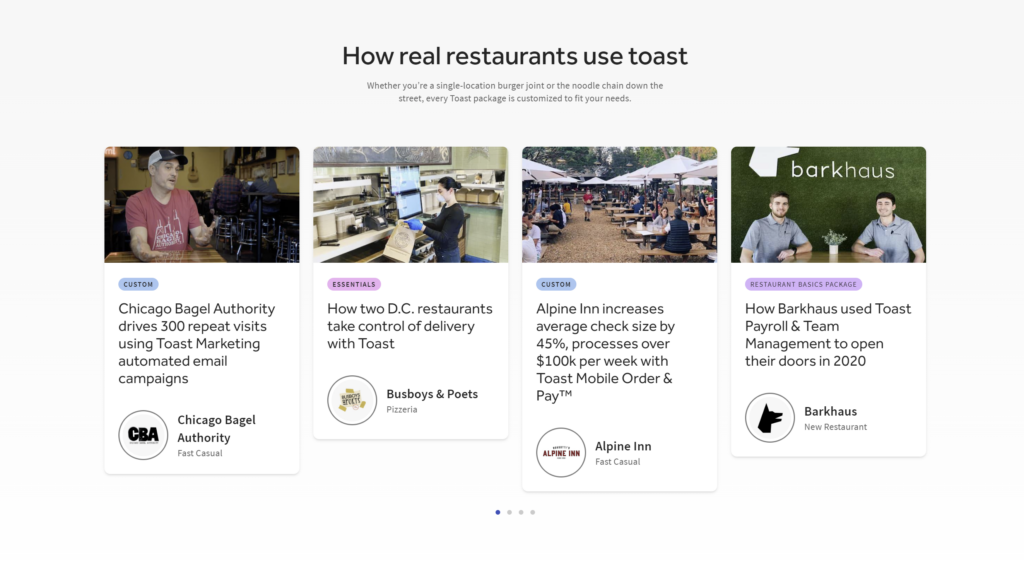
Consider implementing scalable pricing based on value metrics, allowing businesses to differentiate prices and expand revenue as customers gain more value from the product.
A user-friendly and visually appealing pricing page is critical to keeping visitors engaged and driving conversions. Keep the following in mind:
Encouraging upfront annual payments benefits both users and the SaaS company in terms of commitment and cash flow.
Here’s an example of how Simple Testimonial draws out the benefits of signing up for an annual plan in order to save 2 months, compared to a monthly plan:
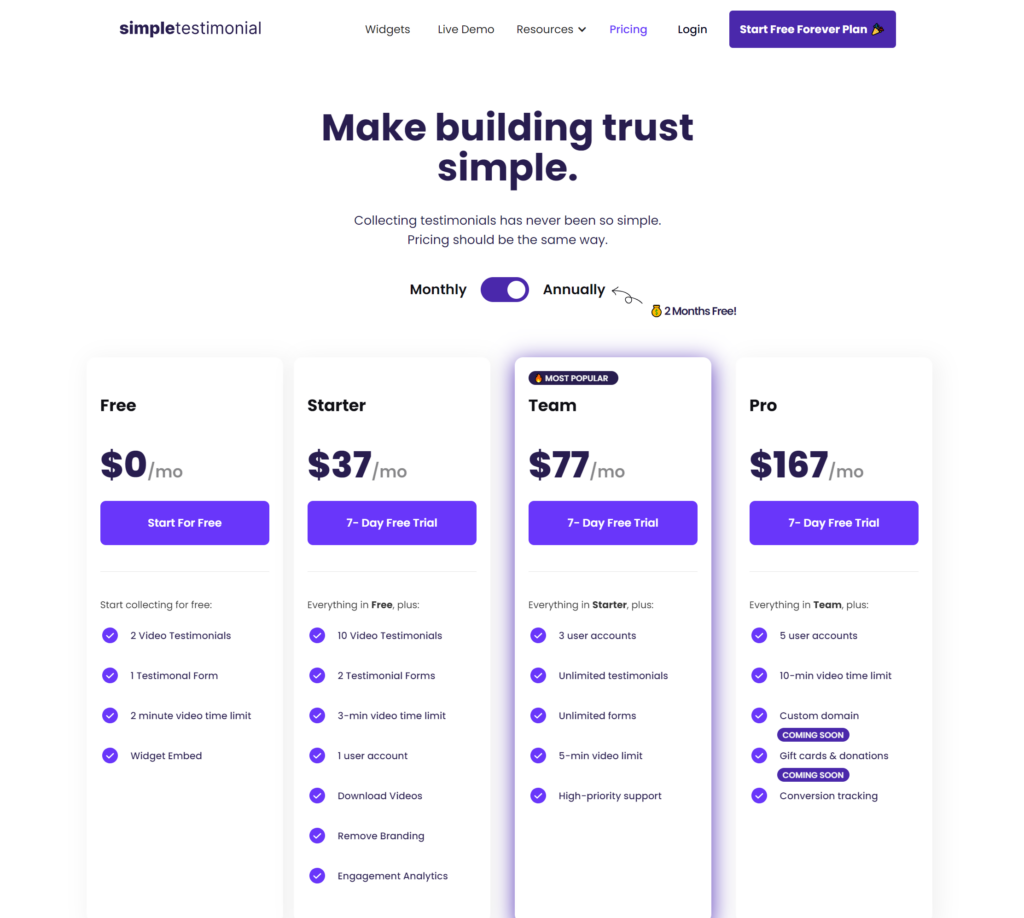
Incentivizing users, and making clear the benefit of savings is a great way to get them to consider signing up for an annual pricing plan.
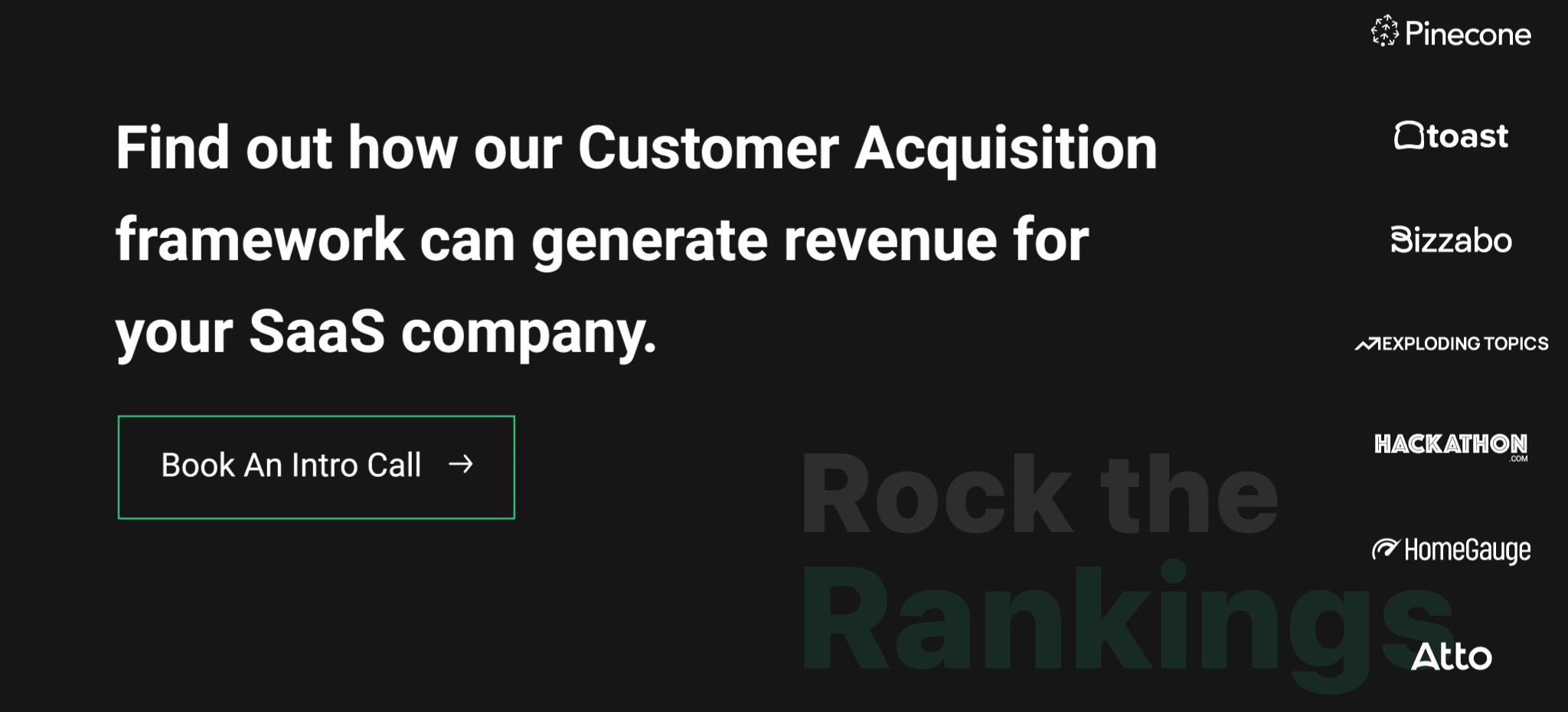
Draw attention to the recommended or most popular plan by visually highlighting it on the pricing page.
Optimizing your SaaS pricing page is a critical endeavor that requires attention to detail and a deep understanding of customer behavior.
The key elements of simplicity, clarity, value, and trust are not just guidelines but necessities for converting prospects into paying customers.
By incorporating the strategies and best practices of successful SaaS companies, businesses can create pricing pages that not only inform potential clients but also encourage them to make positive purchasing decisions.
Ultimately, a well-executed pricing page can significantly elevate a company’s success by turning the complex journey of customer acquisition into a seamless transition from prospect to activation, and finally, to loyal customer.
Founder of Rock The Rankings, an SEO partner that helps B2B SaaS brands crush their organic growth goals. An avid fan of tennis, and growing micro-SaaS businesses on the weekend. 2x SaaS Co-Founder – Currently working to build and scale Simple Testimonial.
Book a 1-on-1 intro call with our founder that includes a FREE custom marketing plan. Start growing faster, today.